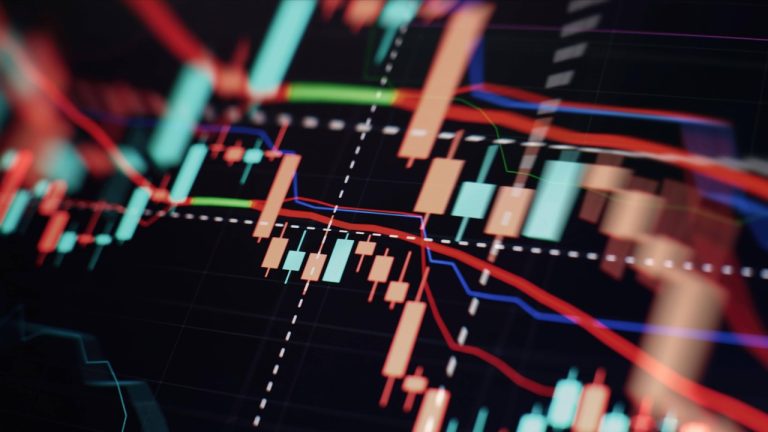In crypto and decentralized finance, data is the new gold. As investors and analysts sift through this wealth of information, two metrics often stand out: on-chain and trading volumes. While they may seem similar, these indicators offer distinct insights into the market’s inner workings. Knowing how to interpret and apply both can significantly enhance your understanding of market behavior.
What Is On-Chain Volume?
On-chain volume refers to the number of transactions occurring directly on the blockchain. Each transfer between wallets, regardless of the exchange platform, contributes to this volume, making it an effective indicator of raw transactional activity within the blockchain ecosystem itself. It shows how frequently assets are being moved, which can signal various things, from regular usage and adoption to larger trends in capital movement.
For example, an increase in on-chain volume may indicate that users are actively transacting and utilizing the network. Conversely, a decrease could suggest either reduced network usage or a trend toward holding assets in wallets, signaling a shift in market sentiment.
Why It Matters
On-chain volume helps analysts assess the network’s underlying health. Active, consistent on-chain volume often implies that there’s healthy usage and demand for the asset itself, independent of price speculation. This metric can also reveal trends in asset distribution, helping to identify if large holders (often called “whales”) are moving assets. Whale movements, when detected, can give hints about potential price shifts or broader market trends.
What Is Trading Volume?
Trading volume, on the other hand, tracks the number of assets exchanged on platforms like centralized and decentralized exchanges. This data reflects market interest and trading activity around an asset, but unlike on-chain volume, it is typically influenced by factors like trading strategies, speculation, and market sentiment rather than organic asset transfers.
Trading volume is often closely linked with an asset’s liquidity—higher trading volume typically means it’s easier to buy or sell an asset without impacting its price. Conversely, lower trading volumes might result in slippage or price distortions when significant trades are executed.
Why It Matters
Trading volume is crucial for market analysts who are looking to assess short-term trends and investor sentiment. High trading volume generally signifies strong interest and may reflect increased volatility, as buyers and sellers actively participate. Low trading volume, meanwhile, can indicate either stability (if the asset is in a consolidation phase) or a lack of interest.
Key Differences: On-Chain and Trading Volumes
Understanding the distinction between these two volumes is essential. These are the main differences:
- Source of Data:
- On-chain volume is derived directly from blockchain data, recording every movement on the network.
- Trading volume is extracted from exchange platforms, representing only the volume of assets being actively traded.
- Purpose and Usage:
- On-chain volume reflects asset transfers, hinting at usage, distribution, and adoption.
- Trading volume reflects the intensity of market interest, sentiment, and liquidity.
- Market Implications:
- High on-chain volume without a corresponding increase in trading volume may suggest that users are transferring assets but not necessarily trading them.
- A surge in trading volume without an on-chain volume spike may indicate speculative trading activity, often driven by news or market sentiment.
- Impact on Market Trends:
- Analysts looking at long-term adoption trends often prioritize on-chain volume as it shows genuine usage and network adoption.
- Short-term traders might favor trading volume as it can indicate the current demand and momentum, useful for assessing immediate market movements.
Using On-Chain and Trading Volumes Together
While on-chain and trading volumes provide separate insights, combining them offers a fuller picture of an asset’s behavior. For instance, high on-chain volume coupled with high trading volume often points to heightened interest or activity around an asset, potentially signaling an upcoming price movement.
Conversely, if trading volume is high but on-chain volume remains low, it could suggest speculative interest without genuine network use. Understanding this can help avoid market traps where price increases are driven more by speculation than underlying adoption or utility.
Practical Application for Investors
By assessing both on-chain and trading volumes, investors can refine their market analysis and make more informed decisions:
- Assess Network Health: High on-chain volume can signify a healthy and active network, suggesting long-term stability.
- Evaluate Market Interest: Strong trading volume is often associated with high liquidity, signaling an active market with tighter bid-ask spreads, which reduces the risk of slippage.
- Spot Anomalies: Significant on-chain volume movements (like large wallet transfers) with little trading volume may indicate preparation for market activity, such as a potential sell-off or shift in holdings.
Final Thoughts
Both on-chain and trading volumes serve as invaluable metrics, each offering unique insights into crypto assets and markets. While on-chain volume delves into the underlying activity within a blockchain, trading volume captures the immediate market sentiment and liquidity. Using these metrics in tandem helps investors gain a balanced perspective—one that considers both the foundation of asset use and the current dynamics of trade.
Understanding how to interpret and differentiate these volumes empowers traders and investors alike, leading to a deeper, more comprehensive approach to crypto market analysis.
Follow Our Official Social Channels:
